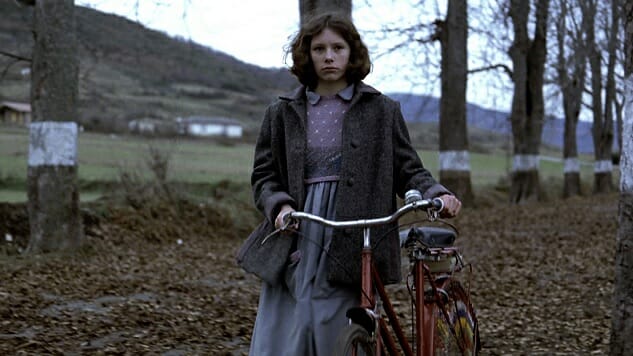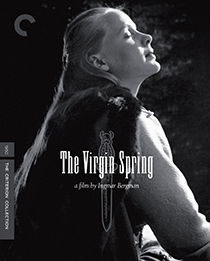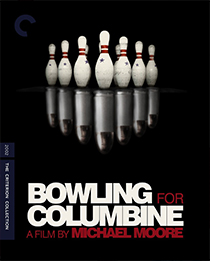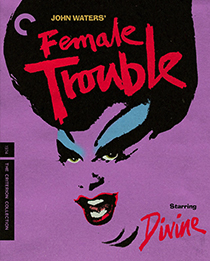
Each month, Paste brings you a look at the best new selections from the Criterion Collection. Much beloved by casual fans and cinephiles alike, Criterion has for over three decades presented special editions of important classic and contemporary films. You can explore the complete collection here. In the meantime, because chances are you may be looking for something to give the discerning (raises pinkie) cinephile this month, find all of our Criterion picks here, and check out some of our top titles this June:
 The Virgin Spring
The Virgin Spring
Year: 1960
Director: Ingmar Bergman
Grappling with the biblical interpretation of “an eye for an eye”—Is swift and brutal justice the way to finally find peace through our grief?—Ingmar Bergman’s hypnotically grim masterwork The Virgin Spring is one of cinema’s most effective and clear-headed study of the very human thirst for vengeance, mainly because of how streamlined, how bare, Bergman’s premise and execution are. The 13th century Swedish ballad on which the film is based is included with Criterion’s new Blu-ray release: Barely three pages long, it still tells a complete three-act story fraught with a horrible crime and the ruthless revenge that follows. The story of a girl who’s raped and murdered on her way to church, only for the murderers to end up staying the night with the girl’s father (Max Von Sydow), giving the father a chance to avenge this horrid wrongdoing, is executed with the emotional distance of a neutral bystander. Perhaps appropriately, because the film takes place during Sweden’s mass conversion to Christianity from Paganism, the notoriously agnostic Bergman points out how little difference there is between the two superstitions. He films the central rape scene from a distance, as if the audience becomes a quiet spectator, forcing us to face our usual inability or disinterest to right the world’s wrongs.
Criterion’s 1080p Blu-ray transfer from a new 2K restoration is absolutely gorgeous in its black and white starkness. If you already own their previous DVD release, that’s really the only reason to get your hands on this Blu-ray, since the extras, and even the cover art, are exactly the same. That said, if you haven’t seen the previous DVD, an audio seminar from Bergman is a godsend (pun fully intended). —Oktay Ege Kozak
 El Sur
El Sur
Year: 1983
Director: Victor Erice
We remember the moment we understand our parents to be people and not gods. That’s the moment Victor Erice captures in his 90-minute adaptation of Adelaida Garcia Morales’ novella, El Sur, whose title refers to a region but also invokes paternal mystery. Couched in the upbringing of its protagonist, Estrella (played at age 8 by Sonsoles Aranguren, and at age 15 by Icíar Bollaín), the film wraps itself around the backstory of her dad, Agustín (Omero Antonutti), an enigma and the object of her youthful worship. We know he came from southern Spain. We know that he still has family, being his mother, his nanny and his father, from whom he is seemingly irrevocably estranged over ideological matters. We also know that he’s deeply unhappy, less a man than a melancholic storm cloud. His ennui’s origins lie at the heart of El Sur’s interrogation of fatherhood, which gives way to an examination of childhood, because part of childhood is the inevitable, utterly disappointing realization that our sires are flawed, hopeless and helpless, tragically mortal despite our eyes and ears telling us stories to the contrary. Erice and cinematographer José Luis Alcaine paint the film with soft, gentle brushstrokes, but delicate though their craft may be, they cannot elide or blunt the impact of its painful, human revelations. —Andy Crump
 Bowling for Columbine
Bowling for Columbine
Director: Michael Moore
Year: 2002
Whatever you think of Michael Moore, whether you see him as a half-wit, a provocateur or a genius documentarian activist, you may pause to consider what he might feel about Bowling for Columbine’s continued relevance and substance 16 years after its release, almost 20 years after the high school massacre referenced in its title took place. The truth: Not much has changed in America since 1999, or since 2002, and if you feel some type of way about that assertion, consider that the same evidence Moore presents to make his case in the film is as relevant in 2018 as it was at the time of the film’s original theatrical run. Paranoia and anxiety wrought by rampant fear mongering has not lessened, but increased exponentially, if not in volume then in broadcast range. America has more guns than people, even though gun ownership has dropped substantially in the intervening years. Racist Americans are more openly racist. Gun owners insist more loudly than ever on their right to bear weapons of mass murder. The list goes on. Moore likely did not intend Bowling for Columbine to be a text of enduring significance. That it’s still important today is likely as sobering to him as it is to the Criterion faithful. —Andy Crump
 Manila in the Claws of Light
Manila in the Claws of Light
Year: 1975
Director: Lino Brocka
Modern audiences perhaps more anxiously attuned to political messages won’t be able to help but cling to director Lino Brocka’s socialist leanings—obviously allied with the working class suffering unbelievably under dictator Ferdinand Marcos’ stranglehold throughout the ’70s—though Manila in the Claws of Light relegates much of that ideology to the background, avoiding censorship care of the same dictatorship upon its release in the midst of a long decade of Philippine martial law. Instead, Brocka focuses intensely on the travails of Julio (Rafael Roco Jr.) a small village fisherman who’s moved to Manila to find his girlfriend Ligaya (Hilda Koronel), recently gone missing and undoubtedly involved in something seedy. Struggling against a rising middle class and Western capitalism—the U.S., of course, supported the Marcos dictatorship—Julio wanders through each frame hungry, alone, exhausted and losing whatever rural hopefulness once buoyed his spirits. Cinematographer Mike De Leon photographs Julio’s Manila in stark, spacious chiaroscuro, making Julio seem simultaneously alone and the victim of a whole world conspired against his simple happiness, shadows looming with menace, large black portions of each image limned only in neon signs displaying the names of indifferent corporate overlords. Manila in the Claws of Light, then, works as both realist document and fabulist melodrama, placing in further relief the turmoil Julio faces moving from the idyllic life of his village to the unforgiving streets of his new home, all without losing a sense of empathy essential to Julio’s survival. As the young man searches for his lost love, he takes stints in construction and, inevitably, prostitution, supported throughout by his fellow workers, who open their homes to him, loan him money and find him work. When Julio finally does meet Ligaya again, his fate is sealed: There’s no escape for them—for anyone, really. What’s tragic isn’t so much that realization as it is how much he must sacrifice to figure that out. —Dom Sinacola
 Female Trouble
Female Trouble
Year: 1974
Director: John Waters
Though Pink Flamingos revels in more notoriety, Polyester in more William Castle-inspired showmanship and Hairspray in more on-one’s-own-terms mainstream success, Female Trouble perhaps best encapsulates all that is Saint John Waters—the casual shattering of taboo, the beautiful evisceration of “taste,” the microgenre hopping, the articulate and hilariously precise dialogue, the transcendence of Divine into shining cinematic trash angel. Careening from Rebel Without a Cause-esque bildungsroman—a tale of teens on the wrong side of polite society with shades of Grease and Valley of the Dolls to boot—to soap opera, melodrama, grindhouse flick and exploitation “women in prison” schlock, Female Trouble uses the brash, bulbous Dawn Davenport (Divine) to represent every archetype and attribute of the women populating the movies that Waters has spent his career dissecting and bending to his restlessly countercultural will. The usual cast of Dreamland characters fills every frame, giving surprising breadth and depth to the sleazy alternate universe Waters concocts—designed by Waters’ go-to art director, Vincent Peranio—crafting a world that similarly bends to Dawn’s anarchal will, providing both a vessel through which Waters can interrogate his own artistic and aesthetic preoccupations, as well as a playground for Divine to do whatever Divine wants to do, which includes fucking himself (Harris Glenn Milstead also plays Earl, the bottom-feeding grotesque who rapes Dawn upon her running away from the parents she’d just pummelled). By the time Dawn’s ersatz mentors and “fascist beauticians” Donna and Donald Dasher (Mary Vivian Pearce and David Lochary) praise her mangled visage (care of Dawn’s mother-in-law, who resorts to throwing acid in Dawn’s face after years of resentment that her son chose “boring” heterosexuality over any other sexual orientation), all standards and sense of decency have been trounced. With Female Trouble, Waters wasn’t just making the world safe for genuine weirdos, he was decimating the foundational texts upon which “standards” and “decency” were ever imagined. When all is beautiful, then nothing is. When all is ugly, then everything is. —Dom Sinacola